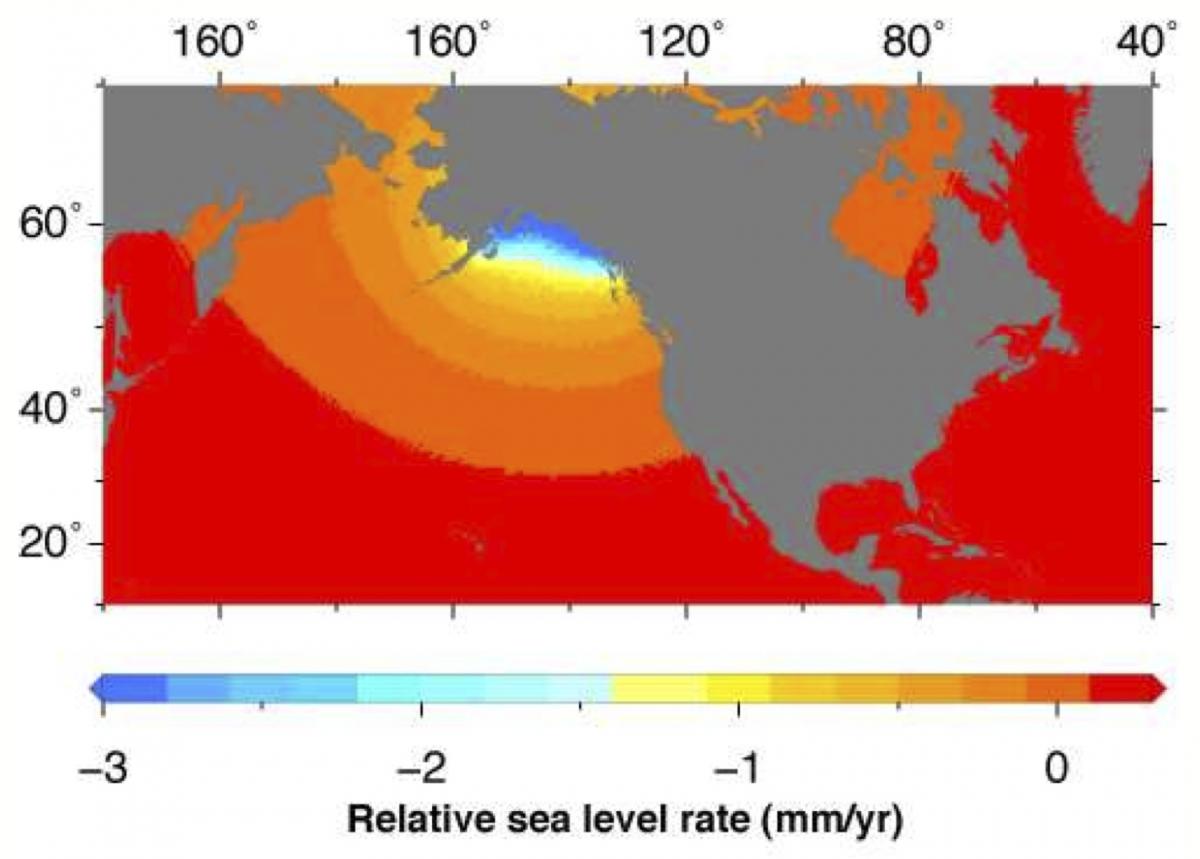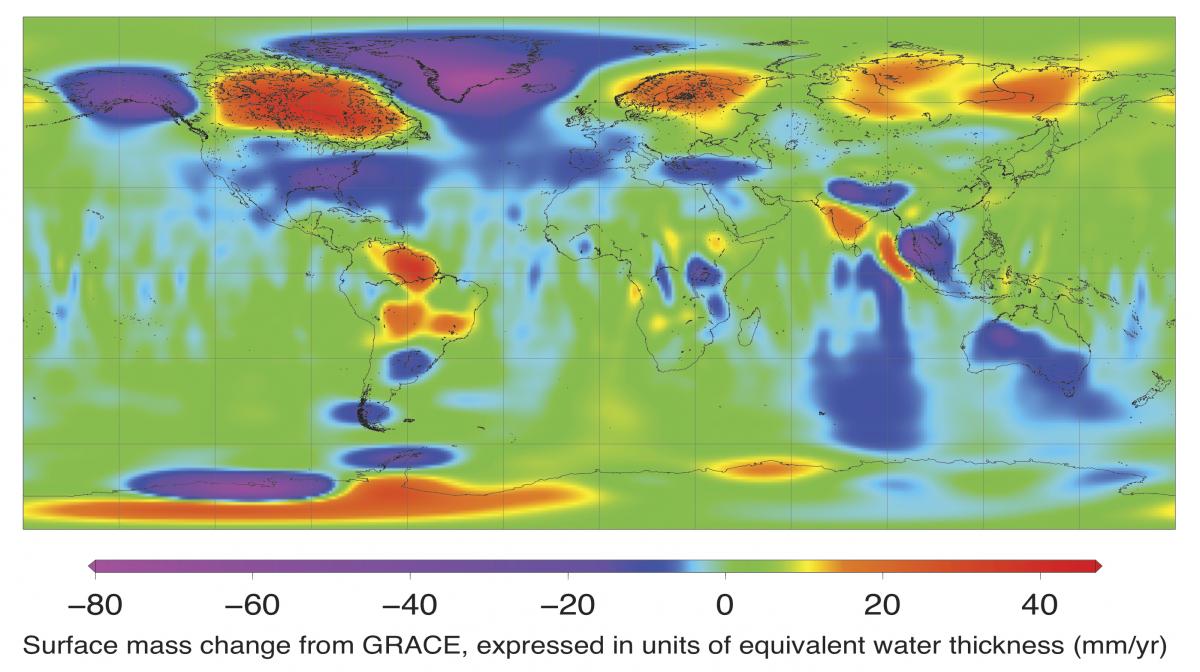Spatial variations in sea level and mass change from GRACE gravity data
Mass loss from ice sheets and mountain glaciers is making major and accelerating contributions to rising sea level. The effects on sea level from this melting ice will not be spatially uniform, but will instead have dramatic regional variations due to the effects of the so-called “self-attraction and loading” (SAL).

The SAL process is illustrated in Figure 1, and Figure 2 demonstrates an example of its effects.
 Perhaps counterintuitively, SAL causes sea level to drop close to the ice mass, while sea level rises more than the global average far from the ice. These spatial differences will have significant societal implications as melting rates increase.
Perhaps counterintuitively, SAL causes sea level to drop close to the ice mass, while sea level rises more than the global average far from the ice. These spatial differences will have significant societal implications as melting rates increase.
One of the primary tools for measuring ice loss is the GRACE satellite mission. GRACE was designed to measure changes in the Earth’s gravity field, and thus gives a vivid description of how mass moves around the planet over time. Mass loss from melting glaciers shows up clearly in GRACE estimates of mass change. However, GRACE measurements can also be affected by mass changes from processes such as seasonal and long-term changes in ground- and surface-water storage, tectonic deformation, and GIA.

In collaboration with a group of geodesists and oceanographers from around the world, our group is working on new ways to model GRACE gravity data, in particular using Kalman filter based approaches, and on new ways to assimilate geodetic data into models for sea-level change. In Hill et al., 2010, we demonstrated a Bayesian approach to combining GRACE, GPS, and tide-gauge models into models for Glacial Isostatic Adjustment. In the future we will extend this technique. We are also particularly interested in how to incorporate tectonic-induced sea-level changes into our models (tectonics change the height of the land, and thus relative sea level), since in SE Asia the effects of tectonics on sea-level change are often greater than those caused by climate effects.